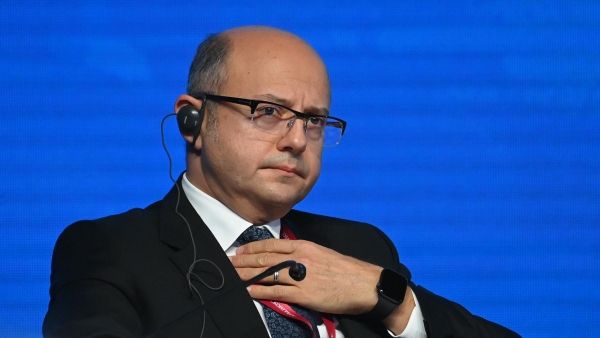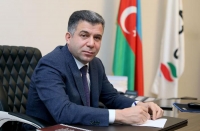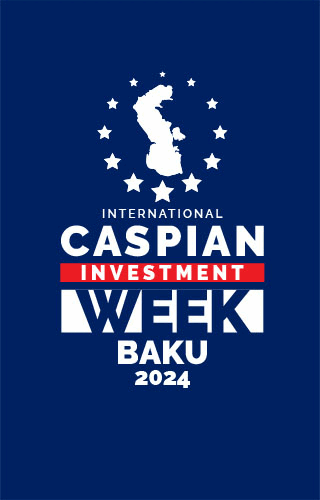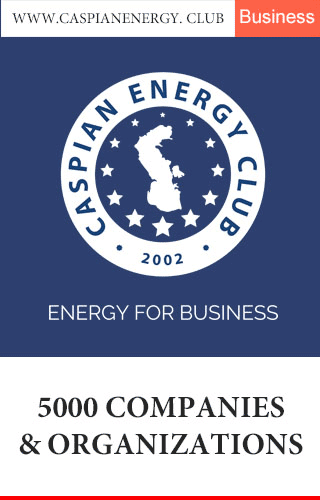Caspian Energy (CE): Presidents of the two countries, Azerbaijan and Turkey, launched the strategic TANAP gas pipeline on November 30. What is its maximal carrying capacity and which new sources will join the gas pipeline in future?
Parviz Shahbazov, Minister of Energy of Azerbaijan: The key role in implementing the idea of exporting natural gas to Europe from a new source belongs to the Trans-Anatolian Natural Gas Pipeline (TANAP). As the result of the Azerbaijan-Turkey brotherhood and friendship, the TANAP has led to the emergence of a grandiose infrastructure project such as the Southern Gas Corridor. In this sense, completion of the TANAP pipeline section linking with the EU is a landmark event. This project is an achievement of President Ilham Aliyev’s policy aimed at strengthening our country’s position on global issues such as energy security.
One of the advantages of the TANAP is that its transmission capacity and a number of project participants can be increased in future at the request of countries which wish to join the pipeline. The initial annual pipeline transmission capacity makes 16 bcm. About 4 billion cubic meters of gas has been transported via the TANAP to Turkey since July 2018 until the present day. 6 billion cubic meters of gas per year is planned to be delivered to the Turkish market via the TANAP from June 2020. The annual carrying capacity of the pipeline will reach 16 bcm starting from the end of 2021. If required, the carrying capacity of the pipeline can be increased up to 31 bcm in the next stage. There is a big potential for the expansion of TANAP. Which countries shall be sources of gas is to be decided by gas producing countries.
CE: How does the delay in TAP’s construction impact the export policy? What is the size of expenses facing producers? Are you satisfied with the present work speed?
Parviz Shahbazov: At present, the Trans Adriatic Pipeline (TAP) is 91% complete. The project is planned to be delivered on time. The obstacles which may cause the delay have been handled. It is planned to get the pipeline construction completed and transport Shah Deniz-Phase 2 gas to the European markets in the second half of 2020. TAP is a project meeting EU’s goals such as energy security, diversification of sources and environmental protection. This provides a strong political support for the project at the international level.
CE: How big is the demand for natural gas on the global market today and how do you assess the competitiveness of the Caspian gas compared to Russian, Norwegian, Algerian gas and other sources, as well as to LNG supplies from Qatar, the USA and Australia?
Parviz Shahbazov: The global demand for natural gas, as for a low-carbon energy source, has been increasing in recent decades. The share of natural gas in the global energy balance now makes 23%. As the figures of 2019 are not ready yet, I will refer to the development indicators seen in 2018. When it comes to natural gas, 2018 stood out as one of the golden years. Global gas production and consumption totaled around 3.87 trillion cubic meters and 3.85 trillion cubic meters in 2018 respectively. The global demand for gas rose by 5.3%. According to the forecasts, the share of natural gas in the global energy balance will make around 26-27% in 2040.
The process of diversification of supply sources is now running on the European market. Diversification of sources and routes is the main goal of the European energy security policy. For Europe, Caspian gas is a new source, while the TAP is a new route.
Complying fully with energy diversification, Azerbaijani gas is delivered to Europe via the corridor consisting of gas pipelines, which means a stable and long-term supply. On the other hand, 25-year contracts signed with 9 companies from 8 countries guarantee the sale of 10 bcm of Shah Deniz-Phase 2 gas.
It also bears reminding that the Southern Gas Corridor is the first project providing new gas supplies to the South-East Europe. Azerbaijani gas will not only sufficiently meet demand of these countries but also contribute into creation of the supply chain for countries possessing no gas infrastructure.
CE: How does uneasy relationship of Turkey and Greece impact the project?
Parviz Shahbazov: Regional and global significance of the Southern Gas Corridor is capable of neutralizing external impact on the project. Both the Turkish and Greek sides are interested in successful implementation of this project. Agreements on sale of certain volumes of gas have been signed with each of these countries: 6 bcm – with Turkey, about 1 bcm – with Greece.
Along with gas supply to Turkey and Greece, the Southern Gas Corridor provides conditions for turning these countries into hubs. At present, the operations over the Southern Gas Corridor sections, crossing the territories of both countries, are successfully completed.
CE: There are about 20 gas hubs in Europe and only three of them are of international importance: in Great Britain, the Netherlands and Austria. To what degree is the south gas hub important, given the new supplies?
Parviz Shahbazov: It will depend on the number of pipelines to be linked to the Southern Gas Corridor in future, and also on the volumes of transported gas. Construction of the Greek-Bulgarian interconnector (IGB) is currently ongoing in order to have it linked to this corridor. Besides, operations on implementation of the Ionian-Adriatic pipeline (IAP) project are ongoing as well. Romania is interested in using the Romanian-Bulgarian gas interconnector and the transmission infrastructure of the Bulgaria-Romania-Hungary-Austria (BRUA) pipeline during the expansion phase of the Southern Gas Corridor in the direction of the Balkans and Central Europe.
Hungary is also taking interest in acquiring natural gas via the Southern Gas Corridor. The Southern Gas Corridor has been designed in a way to permanently expand and develop. At the next stage of development the Southern Gas Corridor can extend towards the Central and Western Europe, and turn into a hub.
CE: What stage has the development of the Trans Caspian gas pipeline reached? To what extent is this project urgent for Azerbaijan today?
Parviz Shahbazov: According to the data of BP, Turkmenistan’s gas reserves make 19.5 trillion cubic meters. A total of 61.5 billion cubic meters of gas was produced in 2018. Gas consumption totaled 28.4 bcm.
Diversification of export routes and gaining revenues from natural gas are also important for Turkmenistan. The Trans-Caspian gas pipeline project provides an access for Turkmenistan’s gas into the European market. Turkmenistan and the European Union have the final say in this process. Turkmenistan is interested in considering export routes in the direction of Europe and in delivering energy resources to foreign markets. Discussions with the European Union and Turkey are held on different levels. Turkmenistan has been represented at the meetings of the Southern Gas Corridor Advisory Council for two years in a row. All of it is a positive aspect in development of energy cooperation with the participation of Turkmenistan.
Azerbaijan is holding energy cooperation with Turkmenistan in bilateral and trilateral formats. An example of this is the April meeting held in Ankara last year with the participation of Energy Ministers of Azerbaijan, Turkey and Turkmenistan.
Azerbaijan has an experience bringing benefits to all parties in transportation of Central Asian energy resources, including delivery of Turkmen oil to the world markets. Azerbaijan provides transit opportunities for energy resources of Turkmenistan. Central Asian countries can enjoy all logistics services in future as well.
CE: What stage has been reached in developing a long-term state strategy on renewable sources of energy? What will be a percentage ratio in the energy balance in coming 10 years?
Parviz Shahbazov: Mapping out of the “Long-term strategy on development of the energy sector of the Azerbaijan Republic” is envisaged in accordance with the Azerbaijan Republic President’s order #1209 “On acceleration of energy sector reforms” dated 29 May, 2019. The strategy will reflect strategic measures associated with the development of renewable sources of energy. International consulting companies are now attracted, and a relevant work is underway due to this measure.
The goal in the next 10 years is to increase the share of using renewables up to 30% in the total installed capacity. The work on development of the renewable energy sector is currently underway in compliance with the order of the head of the state. Operations on implementation of pilot projects concerning wind and solar sources of energy with the capacity of 440 MW are currently carried out with the assistance of foreign energy companies. After the Law “On use of renewable sources of energy in electricity production” has been passed, it is planned to create additional generation capacities at the expense of private investments attracted via auctions. For this purpose, the project on preparation of auctions is being implemented with the support of the European Bank for Reconstruction and Development, including the work on development of the legal framework regulating tendering processes.
CE: Which types of energy resources are the most competitive in the climate conditions of Azerbaijan?
Parviz Shahbazov: High level use of hydropower resources is practiced in Azerbaijan. Thus, 1,782.2 million kWh was produced out of a 1,134MW capacity in 2018. Nowadays, using of wind and solar energy is of particular significance in the general energy strategy of the Republic. Azerbaijan is attaching big priority to increase of using solar and wind energy. Competitiveness of renewable energy sources in relation to the conventional energy resources comes mainly out of development of renewable energy potential and is directly associated with the technology development in the country. Our observations show that the attention given by the head of the state to the renewables sector, ongoing reforms in the country and development of technologies in the energy sector along with existing electricity wholesale tariffs make it possible to invest. The potential of the renewables sector in our country has reached a sufficiently good level.
Thank you for the interview












